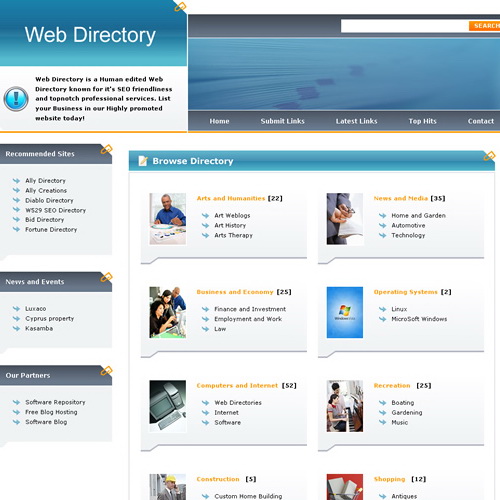A Development of Web Directories: Starting with Fixed Lists to Dynamic Portals
A Development of Web Directories: Starting with Fixed Lists to Dynamic Portals
Blog Article

In the beginning days of the internet, traversing the vast extent of data online was a formidable task. Online catalogs emerged as a response to this challenge, offering curated directories of websites arranged by type. These static lists offered users a way to locate content based on broad classifications, making the web more reachable during a time when internet search tools were still in their infancy. As the digital landscape evolved, so too did the idea of organization and accessibility, leading to the development of additional flexible and advanced platforms.
Internet portals soon began to take shape, transforming the way users engaged with the web. Unlike traditional web catalogs, web portals integrated a plethora of services and materials into a cohesive, harmonized interface, permitting for tailored experiences and live information. This change not only improved user engagement but also prepared the ground for the more detailed and diverse platforms we depend on currently. Realizing the journey from simple directories to dynamic portals shows much about the changing needs of internet users and the persistent quest for convenience and comfort in our virtual lives.
The Initial Days of Web Catalogs
In the nascent stages of the web, web directories emerged as vital tools for exploring the chaotic expanse of online content. These lists operated mainly as fixed lists, categorizing sites based on subjects and categories. Users would frequently find themselves sifting through long, unchanging lists in pursuit of pertinent data, marking the dawn of an era characterized by simplicity and limited interactivity.
Explore Job Opportunities Globally
One of the most prominent early web catalogs was Yahoo.com, which solidified itself in the 1990s. Founded by Yang and Filo, Yahoo originally began as a handpicked curated list of preferred websites, evolving into a comprehensive guide that users relied on to discover and reach varied online materials. This model of human curation established the tone for the catalog landscape, demonstrating the importance of arrangement and taxonomy in the online realm.
As more websites proliferated, the need for effective browsing tools increased, prompting the creation of additional directories. The early web catalogs allowed users to navigate the internet’s vastness but frequently were missing the dynamic features that would subsequently define advanced sites. This time marked a crucial foundation in the evolution of online browsing, laying the way for innovations and improvements that would revolutionize how users engage with web-based information.
Transition to Responsive Portals
As the digital landscape evolved, the drawbacks of conventional web directories became increasingly evident. Unchanging lists often provided obsolete information, resulting in a unsatisfactory user experience. To address these issues, developers began creating fluid portals that could not only index content but also engage users by offering personalized experiences. These portals utilized databases that allowed for instant updates, ensuring that users always accessed the most relevant information.
Fluid portals also added enhanced search functionalities, which surpassed the basic term searches of classic directories. Users could refine results based on various factors such as place, relevance, and customer ratings, leading to a more tailored exploration of available content. This change represented a significant transition from merely cataloging links to gathering comprehensive resources that catered to the varied needs and likings of users.
Additionally, the rise of user-generated content further fueled the shift to adaptive portals. Users began contributing reviews, feedback, and audio-visual content, enriching the platforms and fostering community interaction. This joint aspect not only made such portals more valuable but also established them as reliable sources of information. As a result, dynamic portals became vital tools for navigation and discovery on the web, solidifying their place in the online landscape.
A Outlook of Web Directories
As the digital landscape continues to evolve, the future of web directories is likely to see significant transformations. With advancements in artificial intelligence and ML, web directories are set to become more personalized and intuitive. This progress allows for customized content delivery, making it easier for users to find applicable information swiftly. Enhanced algorithms will be able to predict user preferences and offer recommendations based on previous interactions, transforming from a static list to a fluid, user-focused experience.
Furthermore, the integration of social media feeds and real-time data will redefine the functionality of web directories. Users will also search for information but also engage with content that is continuously updated. This results in a more interactive environment where communities can grow around shared interests found through these directories. The blend of web directories with social interactivity promotes networking and collaboration among users, enhancing the overall value of the directory.
Lastly, as the demand for niche and specialized content rises, web directories will adapt by evolving into more robust in their categorization and filtering systems. Future directories might specialize in specific industries, hobbies, or localities, offering a more curated experience. This shift enables users to sift through vast amounts of information more efficiently, ensuring that web directories continue to be relevant and essential in navigating the complexities of the internet.
Report this page